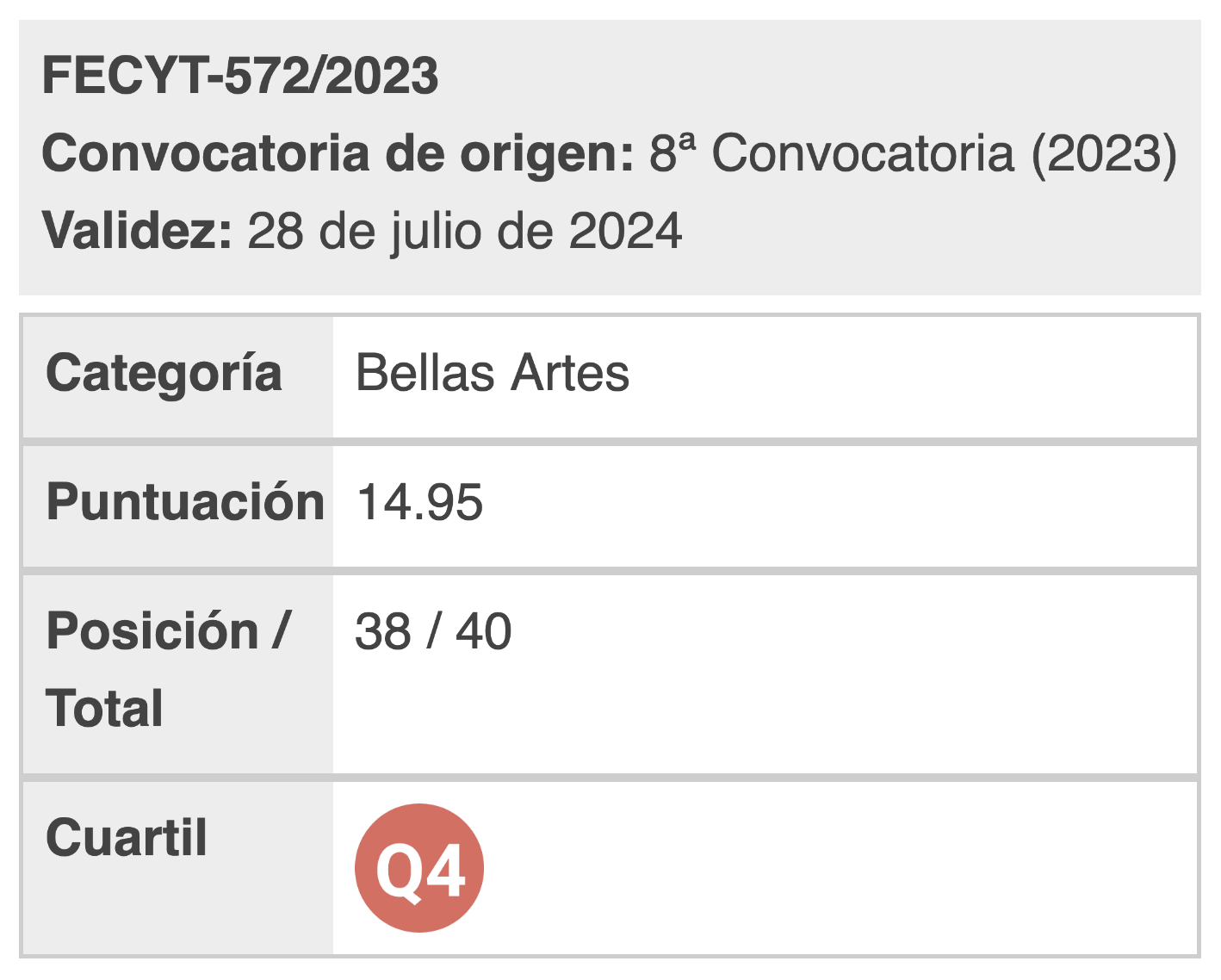Explication of screen culture
history of formation and forms of cultural constitution
Keywords:
screen culture, cinema, television, computer, smartphone, interactivity, screen medium, digital manAbstract
The screen is rapidly becoming the dominant mode of modern culture, acting as a technological tool, a medium and a special, in its own way unique environment for the multidimensional human existence. This actualizes the study of the genesis of screen culture, the content and evolution of the formats of its representation both in the structure of human everyday life and in the historical continuum of culture.
The research methods include the following: the methodology of evolutionism, cultural-semiotic and comparative methods, which allows to trace the genesis of screenness and compare various forms of screen culture; and the typological method and systematic approach, which allowed to systematize the forms of screen culture and reveal the principles of their distinction.
The paper identifies four main screen formats: cinematographic, television, computer and smartphone-mobile. The acceleration of the screening dynamics of many cultural spheres and the formation of a special cultural continuum will be revealed, where all traditional social and personal activities are screened, creating a space of new authenticity and mythology. The framework of its architectonics is visually dynamic forms, often with interactive and hypertextual properties.
References
Aarseth, E.J. (1997). Cybertext: Perspectives on Ergodic Literature. Baltimore.
Adorno, T., Horkheimer M. (1969). Dialektik der Aufklaerung: Philosophische Fragmente. Frankfurt.
Babinovich, V.S. (2019). Identity of a gamer in the virtual space of video games. Bulletin of the Tomsk State University, no. 446, pp. 64-67. (In Russ)
Bartel, C. (2013). Free will and moral responsibility in video games. Ethics and Information Technology, vol. 17, iss. 4, pp. 285-293.
Baudrillard, J. (1976). L'échange symbolique et la mort. Collection Bibliothèque des Sciences humaines, Gallimard.
Baudrillard, J. (1981). Simulacres et Simulation. Paris: Galilée.
Burdea, G., Goiffet, P. (2003). Virtual Reality Technology. NY., 199 p.
Castells, M. (2004). The Internet Galaxy. Oxford University Press. 306 p.
Castillo Levicoy, C. N., Pérez Lira, C., & Álvarez Gómez, N. (2024). Video mapping as an artistic expression in the enhancement of buildings of historical and heritage interest, Aysén region, Chile. ASRI. Art and Society. Journal for Research in Arts and Digital Humanities, (25), 119–132. https://doi.org/10.33732/ASRI.6554
Deleuze, G. (1986). Cinema. University of Minnesota Press. 264 p.
Dunn, J. (2012). Virtual worlds and moral evaluation. Ethics and Information Technology, vol. 14, iss. 4, pp. 255-265. DOI: https://doi.org/10.1007/s10676-012-9298-6
Foucault, P.-M. (1975). Surveiller et punir. Naissance de la prison, Paris, Gallimard, 328 p.
Gere, Ch. (2012). Genealogy of the computer screen. Screen culture. Theoretical problems, pp. 38-54. (In Russ)
Goerger, M. (2017). Value, violence, and the ethics of gaming. Ethics and Information Technology, vol. 19, iss. 2, pp. 95-105. DOI: https://doi.org/10.1007/s10676-017-9417-5
Guins, R. (2014). Game After: A Cultural Study of Video Game Afterlife. Game After: A Cultural Study of Video Game Afterlife, pp. 1-355.
Holt, R. (2000). Examining video game immersion as a flow state. Washington.
Huhtamo, E. (2012). Elements of screenology: to the problem of media archeology. Screen culture. Theoretical problems, pp. 116-174. (In Russ)
Kirillova, N.B. (2008). Media culture: theory, history, practice. Moscow. 496 p. (In Russ)
Kirillova, N.B. (2018). The Transformation of Screen Culture as a Phenomenon of Information Age. KnE Engineering, vol. 3, iss. 8, pp.128-133.
Kondakov, I.V. (2014). Screen and "book" text: depth of interpretation. Science of television, iss. 11, pp. 191-197. (In Russ)
Lévi-Strauss, C. (1958). Anthropologie structurale. Paris, 454 p.
Lotman, Y., Tsivyan, Y. (1994). Dialogue with the screen. Tallinn. 215 p. (In Russ)
Luhmann, N. (2004). Die Realität der Massenmedien. Wiesbaden.
Manovich, L. (2012). Archeology of the computer screen. Screen culture. Theoretical problems, pp. 55-76. (In Russ)
Manovich, L. (2001). The Language of New Media. Cambridge.
Marcuse, H. (1964). One-Dimensional Man. Beacon Press. 257 p.
McLuhan, M. (2002). The Gutenberg Galaxy: The Making of Typographic Man. Toronto: University of Toronto Press.
McLuhan, M. (1964). Understanding Media: The Extensions of Man. N.Y.: McGraw Hill.
Meskin, A., Robson, J. (2016). Video Games as Self-Involving Interactive Fictions. Journal of Aesthetics and Art Criticism, no. 74 (2), pp. 165-177. DOI: https://doi.org/10.1111/jaac.12269
Mikhalovich, V. (2012). Television time. Screen culture. Theoretical problems, pp. 226-251. (In Russ)
Mitchell, W.J.T. (1995). Interdisciplinarity and Visual Culture. Art Bulletin, vol. 77, no. 4. pp. 540-544.
Navas López, F., & Galiano-Díaz, J. C. (2024). The cuplé La Violetera in international cinema: from the theatre to the big screen. ASRI. Art and Society. Journal for Research in Arts and Digital Humanities, (25), 161–175. https://doi.org/10.33732/ASRI.6557
Ogurchikov, V.P. (2007). Screen culture and modern communicative space. Humanities and socio-economic sciences, no. 2, pp. 113-116. (In Russ)
Patridge, S.L. (2017). Video Games and Imaginative Identification. Journal of Aesthetics and Art Criticism, vol. 75, iss. 2, pp. 181-184. DOI: https://doi.org/10.1111/jaac.12355
Piskunova, S.I., Eliseeva, O.R. (2015). Screen сulture in the space of modern mediaculture. Context and Reflection: Philosophy of the World and Human Being, vol. 6, pp. 183-191.
Razgolov, K. (2012). Screen as a meat grinder of screen discourse. Screen culture. Theoretical problems, pp. 9-37. (In Russ)
Sergeeva, O. (2012). Computer screen as an element of everyday life at home. Screen culture. Theoretical problems, pp. 274-298. (In Russ)
Shaw, A. (2010). What Is Video Game Culture? Cultural Studies and Game Studies. Games and Culture, vol. 5, no. 4, pp. 403-424.
Tarasov, A.N. (2016). The screen type of the cultural code as a semiotic characteristic of the modern stage of socio-cultural transformation: cultural-philosophical analysis. Society: philosophy, history, culture, no. 12. pp. 54-56. (In Russ)
Toffler, A. (1970). Future Shock. New York: Random House, 505 p.
Yampolsky, M. (1993). The Visible World. Essays on Early Cinema Phenomenology. Moscow. (In Russ)
Young, G. (2016). Violent video games and morality: a meta-ethical approach. Ethics and Information Technology, vol. 17, iss. 4, pp. 311-321. DOI: https://doi.org/10.1007/s10676-016-9386-0
Downloads
Published
How to Cite
Issue
Section
License

This work is licensed under a Creative Commons Attribution 4.0 International License.
You are free to:
Share — copy and redistribute the material in any medium or format.
Adapt — remix, transform, and build on the material for any purpose, including commercial.
Attribution — You must properly acknowledge the authorship, provide a link to the license, and indicate if any changes have been made.
You may do so in any reasonable manner, but not in any way that suggests that you endorse or receive any endorsement by the licensor for your use.
No additional restrictions — You may not apply legal terms or technological measures that legally restrict you from doing what the license allows.


























